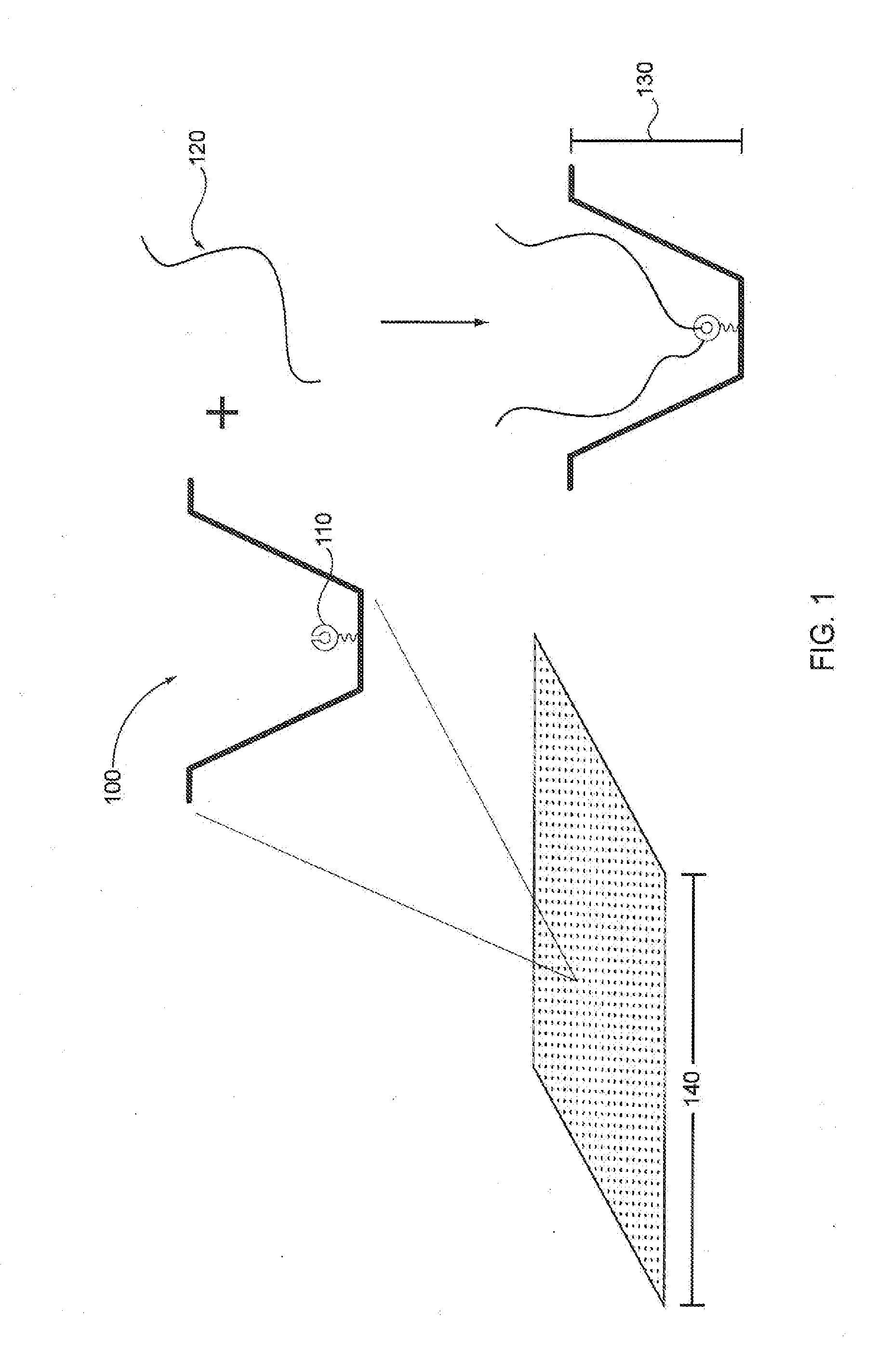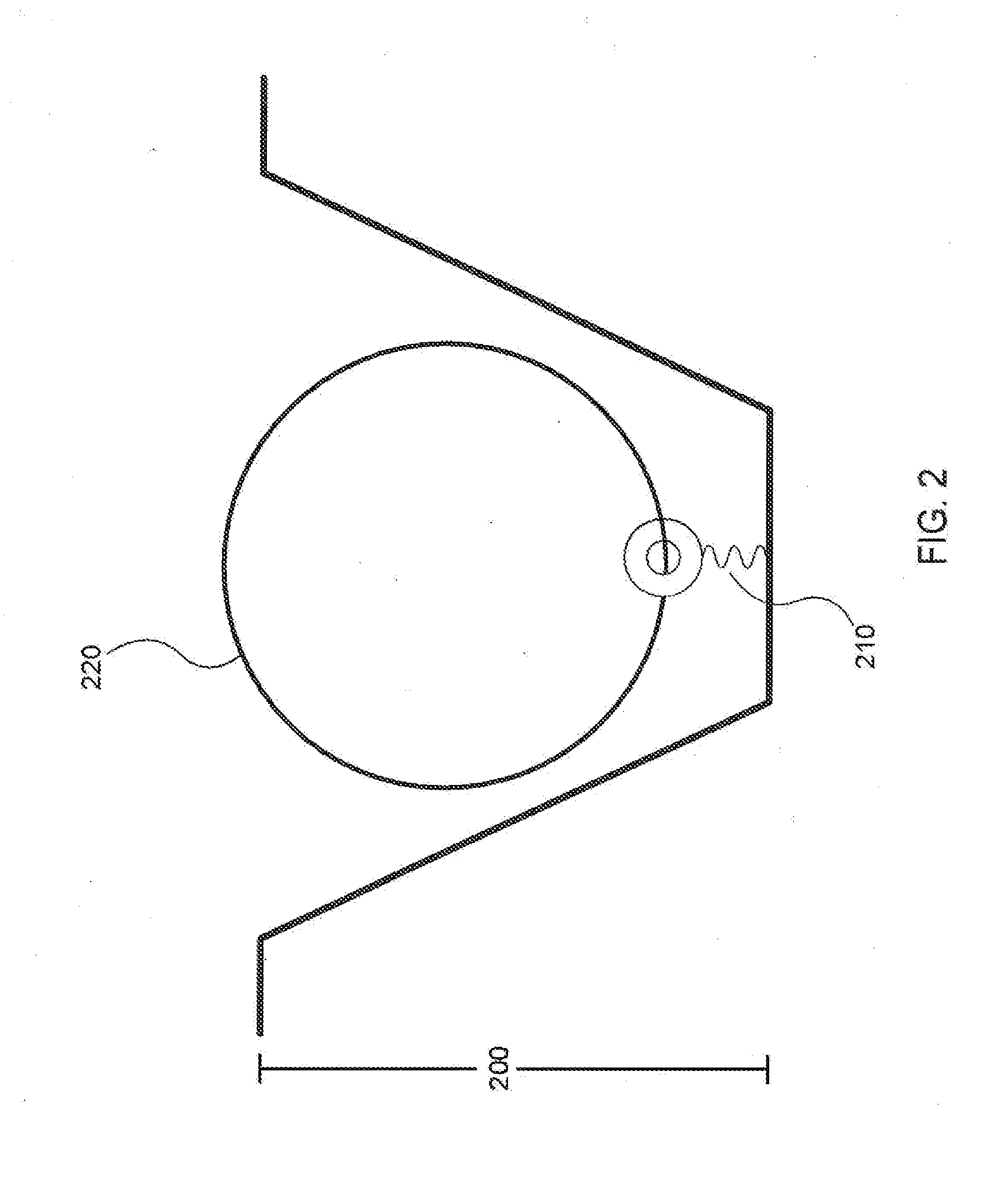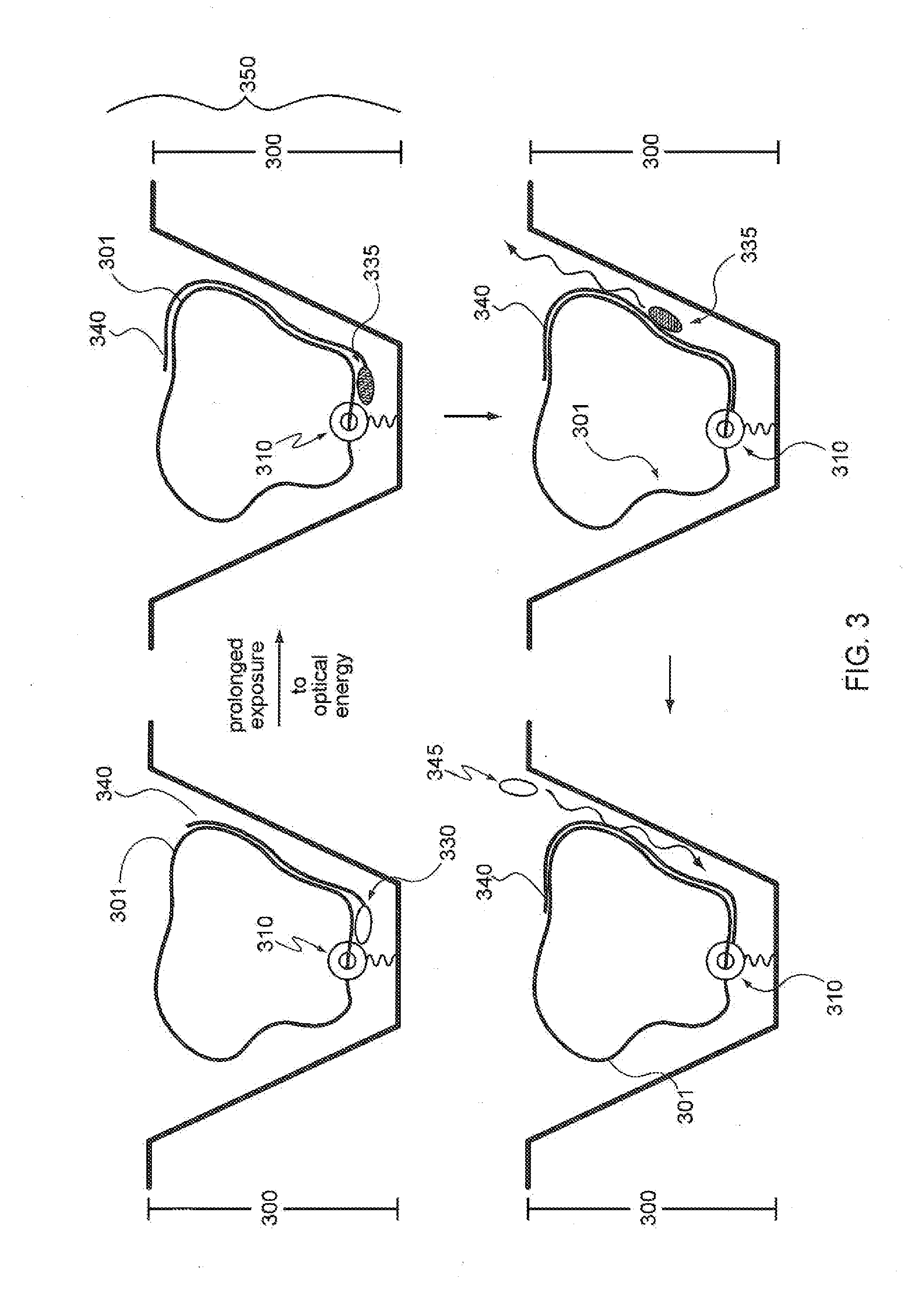Nucleic acid sequence analysis
a technology of nucleic acid and sequence analysis, applied in the field of nucleic acid sequence analysis, can solve the problems of reducing the accuracy, processivity, and/or activity of the polymerase enzyme, and affecting the activity of the enzyme, so as to improve the accuracy and/or processivity of the sequencing enzym
- Summary
- Abstract
- Description
- Claims
- Application Information
AI Technical Summary
Benefits of technology
Problems solved by technology
Method used
Image
Examples
Embodiment Construction
Overview
[0036]Analysis of small reaction volumes, e.g., for single-molecule reactions, is becoming increasingly important in high throughput applications, e.g., in nucleic acid sequencing, antibody studies, analysis of the kinetics of single molecules and molecular complexes, binding assays, drug screening assays, the association of components of single molecular complexes, and the like. Often the results of these analytical studies are influenced by various characteristics of the reaction conditions under which the studies are performed. Such reaction condition characteristics include temperature, pH, buffer, divalent cation composition, temperature, pH, and the particular reaction components that are interacting within the reaction, e.g., reactive proteins, enzyme, cofactors, substrates, binding agents / partners, etc. For example, the presence of a particular type of a given class of enzyme, substrate, cofactor, etc. as opposed to a different type of enzyme, substrate, cofactor, et...
PUM
| Property | Measurement | Unit |
|---|---|---|
| stability | aaaaa | aaaaa |
| temperature | aaaaa | aaaaa |
| pH | aaaaa | aaaaa |
Abstract
Description
Claims
Application Information
 Login to View More
Login to View More - R&D
- Intellectual Property
- Life Sciences
- Materials
- Tech Scout
- Unparalleled Data Quality
- Higher Quality Content
- 60% Fewer Hallucinations
Browse by: Latest US Patents, China's latest patents, Technical Efficacy Thesaurus, Application Domain, Technology Topic, Popular Technical Reports.
© 2025 PatSnap. All rights reserved.Legal|Privacy policy|Modern Slavery Act Transparency Statement|Sitemap|About US| Contact US: help@patsnap.com



